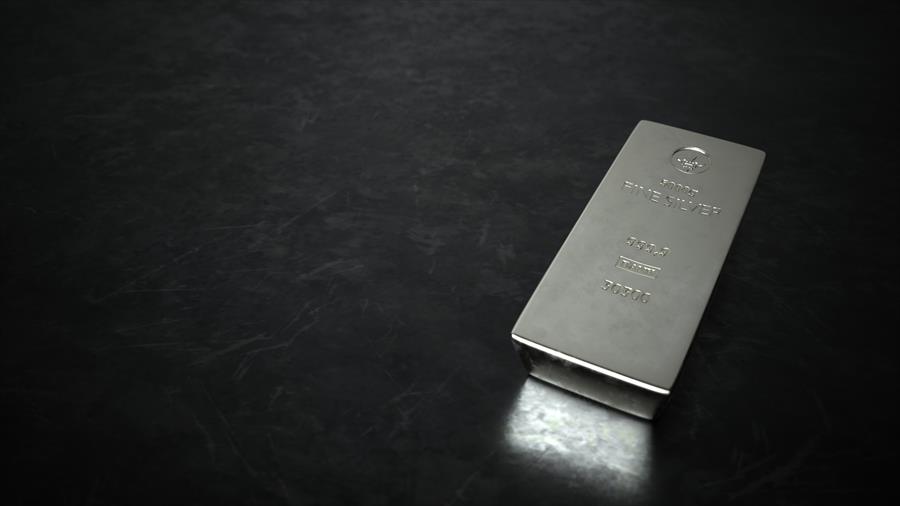Silver Investing Demystified: Uncovering the Most Affordable Premiums
Silver is a popular investment choice for many people who want to diversify their portfolios and hedge against inflation. Silver has a long history of being used as money and a store of value, and it also has many industrial and technological applications. However, buying silver can be tricky, since there are many factors that affect the price and availability of silver products. One of these factors is the premium, which is the amount of money above the spot price of silver that you pay to buy a silver product. The premium can vary widely depending on the type, size, condition, and source of the silver product as well as the supply and demand in the market. If you’re considering investing in silver, make sure to work with a reputable precious metals dealer, such as First National Bullion. San Diego collectors rtp slotshould keep reading to learn what silver premiums are, why they matter, and how to buy silver with the lowest premiums possible.
What Are Silver Premiums?
The premium on a silver product is the amount of money above the spot price of silver that the product costs. For example, if the spot price of silver is $20 per ounce and a one-ounce silver bar costs $24, then the premium is $4 over spot. This premium can also be expressed as 20 percent over spot.
The spot price of silver is the current price in the precious metals marketplace at which a raw ounce of silver can be bought or sold for immediate delivery. The spot price fluctuates constantly, depending on various factors such as supply and demand, market sentiment, geopolitical events, currency exchange rates, and more.
Premiums represent a combination of factors that affect the cost of producing, distributing, and selling silver products. Some of these factors are:
- Manufacturing costs – For newly minted silver coins, rounds, and bars, the cost of manufacturing includes the cost of raw materials, labor, equipment, minting fees, quality control, packaging, and shipping. These costs vary depending on the size, design, purity, and quantity of the silver products.
- Dealer margins – Dealers need to make a profit from selling silver products to cover their overhead costs, such as rent, utilities, salaries, taxes, insurance, marketing, and inventory management. Dealers also need to account for the risk of holding silver inventory that may fluctuate in value or become obsolete or damaged. Dealers may charge different margins depending on their business model, customer base, and competitive strategy.
- Market conditions – The supply and demand for silver products in the market can affect the premiums as well. When there’s high demand for silver products due to increased investor interest or economic uncertainty, dealers may raise their premiums to reflect the higher value and scarcity of their products. Conversely, when there’s low demand for silver products due to decreased investor interest or economic stability, dealers may lower their premiums to attract more customers and clear their inventory.
- Product characteristics – The type, size, condition, and source of the silver product can also influence the premium. Generally speaking, government-issued silver coins tend to have higher premiums than privately minted silver rounds or bars because they have legal tender status, higher recognition, and higher quality standards. Larger silver products tend to have lower premiums per ounce than smaller ones because they have lower manufacturing costs per unit and are easier to store and transport. Older or rare silver products tend to have higher premiums than newer or common ones because they have higher numismatic or collectible value. Silver products from reputable sources tend to have lower premiums than those from unknown or questionable sources because they have higher trustworthiness and authenticity.
Why Do Silver Premiums Matter?
Silver premiums matter because they affect how much you pay for your silver investment and how much you can sell it for later. The higher the premium you pay when you buy silver, the more you need the spot price of silver to rise to break even or make a profit when you sell it. The lower the premium you pay, the less you need the spot price to increase to break even or realize a profit. By paying a lower premium when you buy silver, you can increase your return on investment when you sell it, even if the spot price of silver is the same.
How Can You Buy Silver with the Lowest Premiums?
Buying silver with the lowest premiums requires some research, comparison, and negotiation. Here are some tips to help you find the best deals on silver products:
- Shop around – Compare the prices and premiums of different dealers and products online and offline. You can use websites to see the current prices and premiums of various silver products. You can also visit local coin shops or pawn shops to see what they have in stock and how much they charge. Be aware that some dealers may have hidden fees or charges that aren’t included in the advertised price, such as shipping, handling, insurance, taxes, or commissions. Make sure you ask for the total cost of buying or selling silver before you make a purchase.
- Buy in bulk – Buying larger quantities of silver can help you save on premiums per ounce because you can take advantage of volume discounts and economies of scale. Some dealers may offer lower premiums for orders above a certain amount or weight of silver. For example, you may pay a lower premium for a 100-ounce silver bar than for 100 one-ounce silver rounds. However, buying in bulk also has some drawbacks, such as higher up-front costs, lower liquidity, and higher storage and security costs. You should balance the benefits and risks of buying in bulk according to your budget, goals, and preferences.
- Buy generic – Buying generic or private-label silver products can help you save on premiums because they have lower manufacturing costs and lesser brand recognition than government-issued or branded silver products. Generic silver products are usually made by private mints or refiners that produce silver rounds or bars with simple designs and no legal tender status. They have the same purity and weight as branded silver products but are sold at a lower price. However, buying generic also has some drawbacks, such as less quality control, lower resale value, and a higher risk of counterfeiting. You should check the reputation and reliability of the source before you buy generic silver products.
- Buy common – Buying common or popular silver products can help you save on premiums because they have higher availability and demand than rare or obscure silver products. Common silver products are usually made by well-known mints or refiners that produce large quantities of silver coins, rounds, or bars with standard designs and specifications. They have high recognition and acceptance among investors and collectors and are easy to buy and sell in the market. However, buying common also has some drawbacks, such as less uniqueness, lower appreciation potential, and higher competition. You should diversify your portfolio with some rare or unusual silver products to enhance your collection and increase your returns.
When they’re looking for the best place to buy silver bullion, San Diego precious metals collectors can rely on the trustworthy professionals at First National Bullion. We can answer all your questions and help you find all the information you need on how precious metals can be a valuable part of your portfolio. Give one of our experienced dealers a call today at (858) 304-7580.
The statements made in this blog are opinions, and past performance is not indicative of future returns. Precious metals, like all investments, carry risk. Precious metals and coins may appreciate, depreciate, or stay the same in cash value depending on a variety of factors. First National Bullion does not guarantee, and its website and employees make no representation, that any metals for sale will appreciate sufficiently to earn the customers a profit. The decision to buy, sell, or borrow precious metals and which precious metals to purchase, borrow, or sell are made at the customer’s sole discretion.


